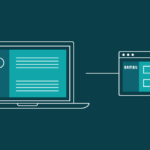To really reap the rewards of fleet tracking technology, you must first make sure that every driver is on board with the initiative. Even though the benefits of telematics are well known amongst fleet professionals, and the fact that tracking devices will soon be commonplace in every vehicle, it’s still common for commercial drivers to have negative opinions about the technology; mostly due to worries about ‘big brother’.
Changing these misconceptions is one of the most important (and sometimes toughest) hurdles to overcome – but you must deal with them if you want to ensure a smooth implementation and fully explore all of the benefits that telematics has to offer.
Discuss the benefits and debunk the myths
The most common misconception amongst commercial drivers is that tracking devices are used to monitor their movements and behaviour. Though it’s true that the technology can do this, the truth is that monitoring every driver individually would be a highly inefficient use of a manager’s time and effort. Vehicle tracking technology aims to engage drivers, and the data it produces is mostly used on a corporate level – not to scrutinise individuals, but to gain insights about activity and performance that can be used to improve business profitability and driver safety. The data can be used to facilitate management decisions which, in turn, lead to reduced travel times, decreased wear and tear, lower insurance premiums and better customer experiences. Put your drivers’ minds at ease by replacing the negative myths with the real reasons for its implementation.
Highlight the safety improvements
If your drivers still seem hesitant, you can use facts and figures to stress the point. According to the Department for Transport, in the year ending September 2016 there were 180,000 road casualties and 1,800 deaths in the UK. With business drivers having a 30-40% higher incident rate than those of private drivers. For these reasons alone, commercial drivers are categorised as ‘high-risk’. Monitoring driving behaviour and rest times can help you improve their safety on the road. Whilst the data can identify patterns in poor driving habits, to ensure a positive reaction to the technology, this data should be used to create incentives and reward best practice, rather than shaming the worst performers. It shouldn’t be about placing the blame or pointing the finger, it’s about identifying a need for additional training, rewarding your best performers and ensuring your team get home safely at the end of every working day.
For behaviour change in the right moment, use an in-cab coaching device to give drivers instant visual and auditory feedback on harsh driving and encourage subconscious driving style adjustments.
Be open and honest about it
As with any new initiative, the most important thing is to be open and honest about its implementation and its purpose. Arm your drivers with all of the facts upfront. Provide product training, where required. Offer reassurance; it is not about keeping tabs on their every movement, it is about helping the business perform better and keeping them safe.




